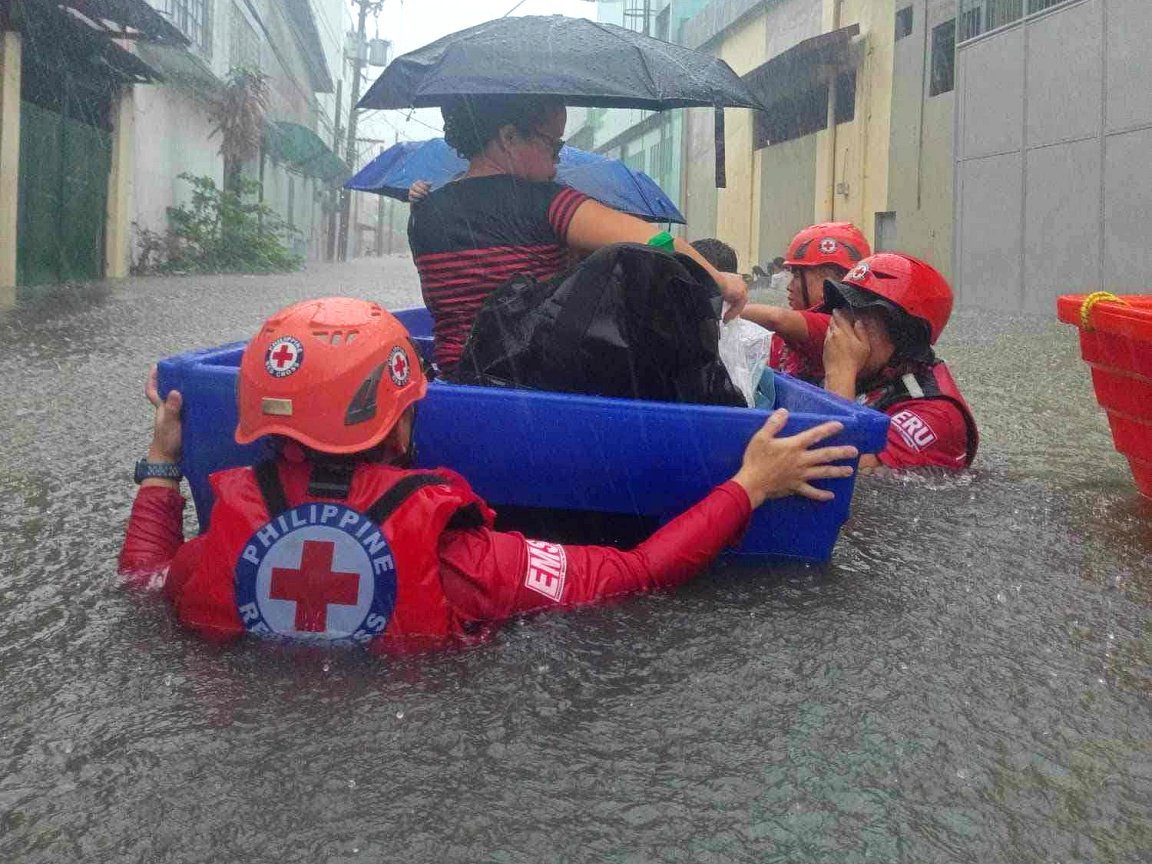
‘Floods as deep as a one-storey building in downtown Manila’

By the Climate Centre
Climate change intensified the rainfall associated with Typhoon Gaemi in the western Pacific last July by as much as 14 per cent, a new study from World Weather Attribution issued today has found.
Gaemi – named Super Typhoon Carina locally in the Philippines – “dumped more than 300mm of rainfall on Manila … leading to floods as deep as a one-storey building in downtown areas,” a WWA press release says.
The south-west monsoon at the time was intensified both by Gaemi and the named Tropical Depression Butchoy, bringing deluges across the Philippines that caused massive flooding in and around Manila, according to IFRC-DREF announcing a 740,000 Swiss franc grant to the Philippine Red Cross (PRC) on 4 August.
The winds associated with Gaemi were also 7 per cent stronger with climate change, while the warmer seas that fuelled the storm would have been virtually impossible without climate change, the study adds.
‘Two-low pressure areas’
Gaemi did not make landfall in the Philippines itself but crossed the country’s oceanic area of responsibility, later doing so in northern Taiwan as it tracked north-west and weakened; it made a second landfall in eastern China, causing floods in Hunan province especially.
There has been a 30 per cent increase in the number of typhoons as intense as Gaemi in the north-west Pacific, in line with studies highlighting a worldwide increase in the number of powerful typhoons, hurricanes and cyclones (different regional names for the same thing), WWA says.
“The period leading up to this disaster [saw] continuous pre-disaster meetings involving PRC headquarters, local chapters, government agencies, and various stakeholders,” IFRC-DREF added. This generated a “cohesive response plan to safeguard communities as soon as the threat was identified, particularly when two low-pressure areas entered the Philippine area of responsibility.”
Volunteers and vehicles
Later Red Cross response in the Philippines included distribution of essential household items, health services, and WASH assistance for people displaced by massive flooding across several regions.
The PRC deployed volunteers and vehicles to deliver hot meals, first aid and psychological support, hygiene kits, mosquito nets, and clean drinking water.
The Climate Centre’s Maja Vahlberg adds: “The ongoing intensification of typhoons highlights the urgent need to further improve urban planning, strengthen flood protection, and ensure people are not in harm’s way when violent typhoons strike.”
The latest WWA study was conducted by researchers from universities and meteorological agencies in China, Malaysia, the Netherlands, the Philippines, Sweden, the UK and the US.
A Philippine Red Cross aquatic rescue team wades through floods to rescue residents in the City of Valenzuela, in the National Capital Region just north of Manila, trapped by the intense rainfall associated with Typhoon Gaemi. (Photo: PRC via social media)